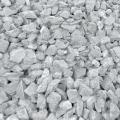Compaction coefficient of soil and sand
Sand (K upl) is known not only by specialists working in design organizations, but also by operators whose main activity is construction. It is calculated in order to compare the actual density in a certain area with the value prescribed by regulations. The compaction coefficient of bulk materials is an important criterion by which the quality of preparation for the main types of work on construction sites is assessed.
What is it?
To compaction characterizes the density that the soil has in a particular area; it refers to the same indicator of the material that has undergone standard compaction under laboratory conditions. It is this figure that is used when assessing the quality of work performed. This coefficient determines how well the soil on the site complies with the requirements of GOST 8736-93 and 25100-95.
For different jobs, sand may have different densities. All these standards are prescribed in SNiP 2.05.02-85, table 22. They are also usually indicated in project documents; in most cases this figure ranges from 0.95 to 0.98.
What causes the density coefficient to change?
If you do not understand what sand compaction is, then it is almost impossible to correctly calculate the amount of material during construction. After all, you need to clearly know how various manipulations affected the soil. What coefficient of relative sand compaction we will ultimately obtain may depend on many factors:
- on the method of transportation;
- how long the route was;
- whether mechanical damage has appeared;
- the presence of foreign inclusions;
- moisture ingress.
Naturally, if you ordered sand, you simply must check it on the spot, because late complaints will be completely inappropriate.

Why take into account the relative coefficient when building roads
This indicator for a sand cushion must be calculated, and this is explained by a common physical phenomenon that is familiar to any person. To understand this, remember how loosened soil behaves. At first it is loose and voluminous. But after a couple of days it will settle and become much denser.
The same fate awaits any other bulk material. After all, its density increases in the warehouse under the pressure of its own weight. Then, during loading, it is loosened, and directly at the construction site, the sand is again compacted with its own weight. In addition, moisture affects the soil. The sand cushion will be compacted during any type of work, be it the construction of a roadway or backfilling of the foundation. For all these factors, the corresponding GOSTs (8736-93 and 25100-95) were calculated.
How to use a relative indicator
During any construction work, one of the most important stages is the preparation of estimates and calculations of coefficients. This is necessary in order to correctly draw up the project. If it is important to find out how much sand will compact when transported in a dump truck or railway car, it is enough to find the required indicator in GOST 8735-88 and divide the required volume by it.

It is also necessary to take into account what kind of work is ahead. Are you going to make a sand cushion under the roadway, or backfill the foundation. In each situation, compaction will proceed differently.
For example, when backfilling sand, a dug pit is filled. Tamping is done using various equipment. Sometimes compaction is done with a vibrating plate, but in some cases a roller is required. Accordingly, the indicators will be different. Keep in mind that the soil changes its properties during excavation. So the amount of backfill must be calculated taking into account the relative indicator.
Table of compaction coefficient values depending on the purpose of sand.
 Construction materials and list of works
Construction materials and list of works Proper insulation of a wooden ceiling in a private house
Proper insulation of a wooden ceiling in a private house What types of crushed stone are there?
What types of crushed stone are there?